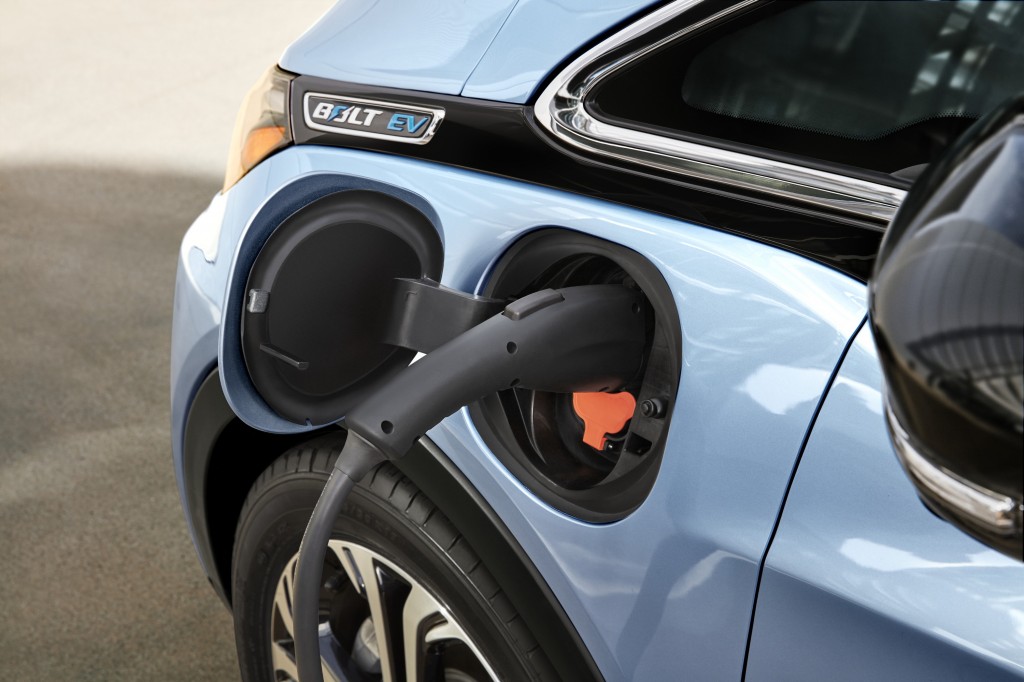The question of how many electric cars can be sold in a single year remains a topic of hot debate as the U.S. market awaits the launch of the 200-mile Chevy Bolt EV at the end of this year.
The world's best-selling electric car, the Nissan Leaf, had its highest-sales year in the U.S. in 2014, when just over 30,000 Leafs were delivered.
Despite a range boost from 84 to 107 miles for 2016, Leaf sales have never returned to that level.
DON'T MISS: Is Chevy Bolt EV's Main Mission To Marginalize Tesla Electric Cars?
Volumes for the 2017 Chevrolet Bolt EV have been debated ever since a volume estimate of 30,000 a year emerged soon after the car was unveiled as a prototype at the 2015 Detroit Auto Show.
GM spokesman Kevin Kelly subsequently clarified that the company was prepared to build as many Bolt EVs as it could sell, and that the 30,000 number did not in any way represent a production ceiling.
Now, Karl Brauer, analyst for Kelley Blue Book, has suggested that Bolt EV sales could run from 30,000 to 80,000 a year in the car's first year.

2017 Chevrolet Bolt EV
The estimate comes from a Barron's article (via Autoblog), in which Brauer suggested that the Bolt EV could capture a percentage of the 400,000 reservations placed for the Tesla Model 3.
That $35,000 200-mile Tesla electric car isn't likely to be delivered in notable quantities until at least sometime in 2018.
We reached out to Brauer to learn more the reasoning behind his estimate.
CHECK OUT: Bob Lutz called 2017 Chevy Bolt EV a 'compliance car'; is it?
The analysis, he told Green Car Reports, was "pretty straightforward," starting with sales of roughly 46,000 volume-priced electric cars last year.
The bulk of those sales came from the Nissan Leaf (about 17,000), the Chevrolet Volt (15,000), and the BMW i3 (11,000)—none of which has anything like the Bolt EV's 200-mile range.
"I genuinely believe [that range] will change the perception and willingness to buy an electric car," Brauer said. "It has for me; I'm planning on leasing a Bolt EV."

2017 Chevrolet Bolt EV pre-production vehicles at Orion Township Assembly Plant, March 2016
Then he looked at the 400,000 Model 3 reservations, most made by people who won't see their cars until 2018 or later under the best of circumstances.
"If the Bolt can appeal to just 10 percent of that market, that’s 40,000 sales."
The Bolt EV also qualifies for the "white" sticker that lets it travel in carpool lanes on California's notoriously crowded freeways—stickers for plug-in hybrids are presently unavailable.
Brauer suggests that the state could see 20,000 to 50,000 buyers alone, as those unwilling to commute in an 80-mile battery-electric car take the plunge.
"Add it all up," he concluded, "and I think 30,000 is a no-brainer, and 80,000 is possible."

2017 Chevrolet Bolt EV pre-production vehicles at Orion Township Assembly Plant, March 2016
And that's even before sales to state, utility, and corporate fleets, which may opt for the Bolt for the same reasons individual buyers do: range, carpool sticker, and low cost of operation.
So there you have it: a more optimistic sales projection for Chevy's upcoming electric car than any we've seen to date.
_______________________________________













